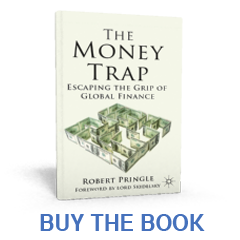Will inflation fuel demand for regime change?
Fiat or a real asset?
It has in the past. Think of the era of the hard Deutsche mark. In the 1970s the German Bundesbank responded to the great inflation and bust of the late 1960s by insulating its money fromUS inflationary storms. Will such reform follow the pandemic inflation of 2020–22?
If the road is to lead to a good money regime, the reform process must include the installation of a solid monetary anchor. This is a device which prevents “the machinery of money from getting out of control and becoming the monkey-wrench in all the other machinery in the economy,” in the words of John Stuart Mill.
The device works by constraining the supply of the monetary base. This avoids the inflationary process of “too much money chasing too few goods”.
However, the components of this group of assets must have special features that lend them “extreme moneyness” such that they enjoy strong and stable demand even though non–interest bearing.
In A Guide to Good Money (Palgrave, 2022) Brendan Brown and I argue that these assets—together forming the monetary base—should possess “super-money” qualities, fulfilling the traditional functions of money to a high degree. We explain how assets can acquire such properties.
In a fiat money regime, where the monetary base consists of currency in circulation and reserve deposits of the banks, the central bank can in principle determine on a day-by-day basis the supply of monetary base.
Please see our Mises wire article here and Hudson Institute podcast here

